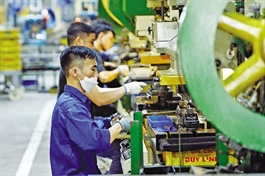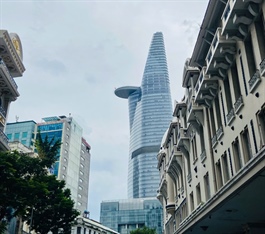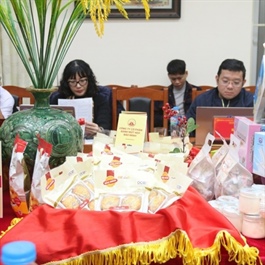The ups and downs of pharma-led tech transfer
The ups and downs of pharma-led tech transfer
With high connectivity and spillover, the pharmaceutical industry can contribute to Vietnam’s becoming a high-income country and one of the top industrialised countries in Asia by 2045.
In addition to research, innovation, and health improvement, the industry plays an important role in the global economy. It directly contributes $755 billion to global GDP, equivalent to that of Switzerland. For every $1 directly generated, it is estimated to generate $2.04 in additional value in the global supply chain.

Thuy Nguyen, director, Pharma Group Vietnam |
The value of technology transfer from innovative pharmaceutical companies comes from technology, human resources, process, technology transfer and spillover effects. In terms of technology, this is found in production lines and equipment used in research and production, formulas and packaging methods of finished products.
Regarding manpower, it helps improve management capacity and technology training in the industry such as researchers, and health workers. It also has spillovers of benefits to related industries and public research infrastructure.
Through technology transfer, knowledge of organisational systems and sequences for operating the technology is transferred. And skills, knowledge, information, benefits and value are developed.
Production and technology transfer require significant investment. Companies invest significantly in building or assisting in upgrading factories, managing complex supply chains, ensuring production efficiency, maintaining quality standards of production facilities, and licensing new facilities.
Globally, facility management is complex and can cost up to $2 billion and take 5-10 years to establish, and operate a new, world-class facility. And 70 per cent of production time is spent on quality control, especially with vaccines.
There are several key factors to facilitate pharmaceutical and vaccine technology transfer, including complete and transparent policies, economic and political stability, adhering to high ethical standards, a large and accessible domestic market, high-quality infrastructure, and promotion of foreign investment through specific incentives in tech transfer policies.
Moreover, a legal environment must be developed to protect intellectual property rights, and ensure data security, transparency, and safety for all. The system should enable access and exchange of relevant information for technology owners Regulations on pharmaceutical management should be harmonised with international practice, while efficiency in processing of drug registration files and related licences must be increased.
The world is witnessing global competition in attracting investment and technology transfer from innovative pharmaceutical corporations. The majority of innovative pharmaceuticals are being produced in Europe and the US, clearly demonstrated by the outstanding value of pharmaceutical exports.
Realising the importance and value of the pharmaceutical industry in the global economy, many Asian countries are increasing efforts to catch up with industry development in Europe and the United States. Several markets that prioritise the development of the pharmaceutical industry, such as China, Japan, South Korea, Taiwan, India, and Singapore, are attracting investors, especially in innovative pharmaceuticals.
One of the greatest challenges is this fierce competition from other countries to create new sustainable economic growth drivers and avoid the middle-income trap. Nevertheless, the amended law provides one of the necessary steps to strengthen the self-reliance of the Vietnamese pharmaceutical industry.
With that, the revised Law on Pharmacy is a particularly great opportunity, expected to create a legal breakthrough for industry to develop in accordance with its potential and set goals.



























